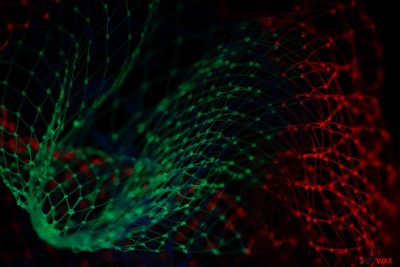NetSpy (virus) - Removal Guide
NetSpy Removal Guide
What is NetSpy?
NetSpy is a keylogger that might be used for malicious purposes

NetSpy is a commercial computer surveillance program that tracks user Internet activity, logs all keystrokes, takes screenshots, and records addresses of visited websites. While this program is often used legitimately within various businesses and companies, cybercriminals can install them behind users' backs to steal their personal data. As a consequence, the victims might suffer from serious financial losses or even identity theft.
| Name | NetSpy |
| Type | Keylogger |
| Distribution | Contaminated email attachments, fake installers, peer-to-peer networks, malicious websites, etc. |
| Functions | Logs all the keystrokes, takes screenshots, spies on users' activities |
| Removal | Install powerful security program and perform a full system scan |
| System fix | Use FortectIntego to repair damaged system files if required |
In most cases, malicious actors use various methods to deliver the virus to destination computers. While some of the attacks may be targeted (especially when it comes to larger organizations and businesses), most of the targets are randomly selected due to the distribution techniques used.
For example, the most common malware delivery method is spam emails – it is one of the older methods that remains very effective to this day. Hackers use malicious attachments and a fake message which inclines users to open the file and allow macros to be run on the PC.
Once executed, the payload is injected into the Windows system, and the spying operations begin. There are all sorts of data that can be gathered, for example, secret documents, logins, passwords, credit card details, and much more. Gathered data is saved to a hard disk and later sent to the attackers to a remote server.
NetSpy runs on every Windows startup and can also be used to block specified websites and disable the Windows Task Manager. Unfortunately, those infected would not notice the presence of the virus initially, although the inability to use certain Windows components can be a good hint.
Therefore, it is vital to have a powerful security application installed on the computer in order to prevent malware infection. Besides, SpyHunter 5Combo Cleaner or Malwarebytes can also be used for its removal. If you find that your system is malfunctioning after the elimination process, use FortectIntego to fix damaged Windows files.
Finally, don't forget to reset all your passwords and monitor your online banking account. Resetting web browsers is also highly recommended.
How to prevent from getting keyloggers
Stream videos without limitations, no matter where you are
There are multiple parties that could find out almost anything about you by checking your online activity. While this is highly unlikely, advertisers and tech companies are constantly tracking you online. The first step to privacy should be a secure browser that focuses on tracker reduction to a minimum.
Even if you employ a secure browser, you will not be able to access websites that are restricted due to local government laws or other reasons. In other words, you may not be able to stream Disney+ or US-based Netflix in some countries. To bypass these restrictions, you can employ a powerful Private Internet Access VPN, which provides dedicated servers for torrenting and streaming, not slowing you down in the process.
Data backups are important – recover your lost files
Ransomware is one of the biggest threats to personal data. Once it is executed on a machine, it launches a sophisticated encryption algorithm that locks all your files, although it does not destroy them. The most common misconception is that anti-malware software can return files to their previous states. This is not true, however, and data remains locked after the malicious payload is deleted.
While regular data backups are the only secure method to recover your files after a ransomware attack, tools such as Data Recovery Pro can also be effective and restore at least some of your lost data.
